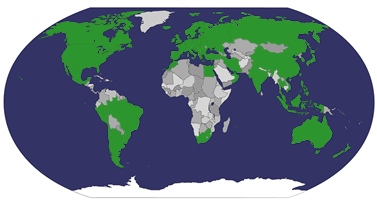
Mount Nemrut, Kahta, Adıyaman, Turkey (UNESCO WHS)


Nemrut or Nemrud is a 2,134 m (7,001 ft) high mountain in southeastern Turkey, notable for the vast statues at a 1st century BC tomb on its summit.
The mountain lies 40 km (25 mi) north of Kahta, near Adıyaman. In 62 BC, King Antiochus I Theos of Commagene built on the mountain top a tomb-sanctuary flanked by huge statues (8–9 m/26–30 ft high) of himself, two lions, two eagles and various Greek, Armenian and Persian gods, such as Hercules-Vahagn, Zeus-Aramazd or Oromasdes (associated with the Iranic god Ahura Mazda), Tyche, and Apollo-Mithras. These statues were once seated, with names of each god inscribed on them. The heads of the statues are now scattered throughout the site; the pattern of damage to the heads (notably to noses) suggests that they were deliberately damaged because of belief in iconoclasm. The statues have not been restored to their original positions. The site also preserves stone slabs with bas-relief figures that are thought to have formed a large frieze. These slabs display the ancestors of Antiochus, who included both Macedonians and Persians.
The same statues and ancestors found throughout the site can also be found on the tumulus at the site, which is 49 m (161 ft) tall and 152 m (499 ft) in diameter. The statues have the likeness of Greek facial features, in conjunction with Persian clothing and hairstyling. The western terrace contains a large slab with a lion, showing the arrangement of stars and the planets Jupiter, Mercury and Mars on 7 July 62 BC, the possible time when construction began on this monument. The eastern portion is well preserved, being composed of several layers of rock, and there is evidence of a walled passageway linking the eastern and western terraces, from a path below at the foot of Mount Nemrut. Possible uses for this site might have included religious ceremonies, due to the astronomical and religious nature of the monument.
The arrangement of such statues is known by the term hierothesion. Similar arrangements have been found at Arsameia on Nymphaios at the hierothesion of the father of Antiochus, Mithridates I Callinicus.
In 1987, Mt. Nemrut was made a World heritage site by UNESCO. Tourists typically visit Nemrut during June through August. The nearby town of Adıyaman is a popular place for car and bus trips to the site, and one can also travel by helicopter. Mount Nemrut is part of a geographic area named the Armenian highlands by Russian and Soviet geographers.
内姆鲁特达格(土耳其语Nemrut Dağ)意思是内姆鲁特山,海拔2,134米,位于土耳其东部阿德亚曼省。在山顶是古代科默金王国的国王安梯奥彻斯一世为自己修造的陵墓,陵墓用石头垒成,高49米,直径为152米,东、西、北三面由台阶式的院落围合,东台傍山,有两道矮墙,上面有一尊他自己高8-9米的雕像,两侧各有狮子和鹰的雕像。另外有5尊希腊和波斯的神像,各高达7米,头部是用整个石块雕造,身体是石块垒筑的,现已倒塌散落。神像底座有刻有神的名称,和有关宗教仪式、法律、敕令等铭文。雕像对面有一座金字塔,为祭祀火神的场所。
西台有一个狮子浮雕,前胸有新月和19颗星,是代表公元前62年7月7日时的木星、水星和火星的运行位置,是安梯奥彻斯一世登基的日子。
北台被一道3米高80米长的围墙环绕,入口处有鹰狮雕像,是举行祭祀仪式的场所。
1881年,德国工程师卡尔·塞斯特对这个遗址进行了发掘,但没有找到墓室的入口。
1987年,被联合国教科文组织列为世界遗产,成为旅游观光地,每年7月到8月期间,附近的阿德亚曼市有直达当地的公车和直升机。
References sources : wikipedia


























 Postcards received from
Postcards received from 









































































0 comments:
Post a Comment